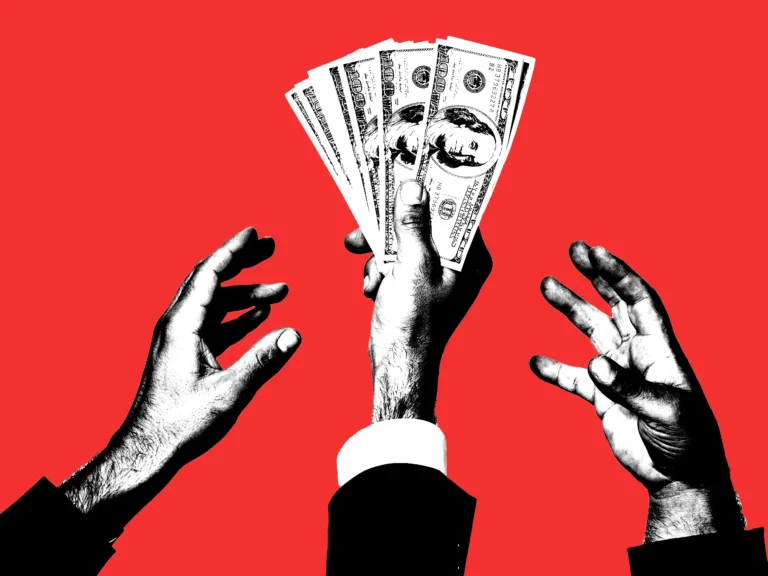Meet the last 20-something millennials: They’re twice as wealthy as their geriatric peers were and are carving creative paths to homeownership

I’ve been writing about millennials since 2018 when they were 22 to 37 years old. Entering adulthood during the rise of social media and online shopping, coupled with some unique economic challenges, put this cohort in the limelight.
People were fascinated by what the kids were up to. The millennial stereotypes of brunching on avocado toast and living with their parents longer had the world especially intrigued — who was this generation that seemingly couldn’t grow up?
Well, they have grown up. The eldest millennials turn 43 this year, according to the Pew Research Center’s definition, and the majority of the generation has entered peak milestone years of homebuying and starting families.
Soon, the generation will age out of their 20s entirely and leave young adulthood behind. The youngest of the generation, born in 1995 and 1996, turn 28 and 29 this year, and just under 9 million 20-something millennials remain, per the US Census. This cohort falls into cusper territory, those born between generations, and are part of the larger “Zillennial” microgeneration.
Not quite millennial, not quite Gen Z, these late 20-somethings are shaped by the pandemic happening early on in their careers and initial wealth-building years. In some ways, they’re actually faring better than their older millennial peers, and their struggles point to larger cracks in America’s social support systems.
A bridge in the workplace
Diana Elliott, vice president of programs at Population Reference Bureau (PRB), told us that one’s late 20s have always been peak years to establish careers. However, these particular late 20-somethings saw the pandemic shorten their typical in-office experience more than the rest of their generation. They were only 24 and 25 at the time, in the workforce for just a few years, and they fear it gave them an uneven footing in the labor force.
“They feel this has negatively affected their ability to learn the soft skills that come from working in an office and may lead to missing out on growth opportunities,” Gabby Davis, a career expert at Indeed and younger millennial herself, told us. But Davis said Indeed research shows they don’t want to go back into an office full-time. While return-to-office mandates have the potential to push them away, she says the youngest millennials are more likely to stick around in a job than Gen Z, who view their jobs with more dispensability.
Cuspers often act as a bridge in the workplace, but younger millennials may find it challenging to bridge this generational gap when reporting to older colleagues and managing younger ones, Davis said. But they’ve already pushed for greater flexibility, communication, and transparency at work, which she thinks can help them ease that transition. Millennials, now the largest generation, will continue to move into leadership roles as they age into their 30s and 40s which Davis believes will help “foster diversity, accountability, and more meaningful workplaces.”
As the generation ages, Elliott predicts they’ll start taking over boomers’ roles as they retire. “We’re going to see a lot of exits from the labor force, not just now but into the next decade or so,” she says. “So it could be a really interesting time for opportunities for young millennials in the labor market.”
Rollin’ in the dough
At first glance, it seemed the pandemic might also jeopardize the wealth trajectory of the youngest millennials and the oldest Gen Zers. Older millennials struggled with the aftermath of the Great Recession and 2008 financial crisis, the rising cost of living, and $1.2 trillion in student loan debt.
In 2018, the St. Louis Fed predicted that those born in the 1980s were at risk of being a “lost generation” when it came to wealth accumulation. Fortunately, that didn’t come to pass: By 2022, their wealth levels were 37% above expectations. But the wealth of younger millennials and older Gen Zers made an even sharper swing at 39%.
That wealth is even more striking when compared to their older peers at the same age. In 2013, 24- to 33-year-olds had a typical wealth level of $16,567, per data the St. Louis Fed provided. That’s more than doubled (even accounting for inflation) for those aged 26 to 32 in 2022, who have a typical wealth level of $55,760.
It shows how much the macroeconomic context can change even within a generation. St. Louis Fed data scientist Lowell Ricketts told us at the end of May, “you have these older millennials still grappling with some of the aftermath of the Great Recession, a subdued economy in which employment outcomes languish for some time,” he said. “Younger millennials have made it by 2022 through much of the pandemic disruptions and found themselves with a much higher amount of wealth accumulated.”
Ricketts said the coronavirus recession’s shorter duration and more aggressive federal policy response saved them. A government cash infusion and a lockdown that prevented us from spending on trips and dinners out “buoyed a lot of financial outcomes across the wealth spectrum,” making 2022 an overall high-water mark for wealth accumulation.
Creatively becoming homeowners
The Fed finds that real estate was a primary driver for younger millennials’ wealth gains, as a hot pandemic housing market hiked up home values. But aren’t millennials unable to buy homes, especially those who’ve had less time to save? Ricketts said that despite affordability issues, some have managed to make it work.
Younger millennials are getting creative about becoming homeowners, explained Jessica Lautz, deputy chief economist and vice president of research at the National Association of Realtors. They’re living at home first to save money or partnering up — 19% of those aged 25 to 33, which includes the youngest millennials, are unmarried couples, the highest NAR sees among any generation in its Generational Trends Report.
They’re also the most likely to get down payment transfers, often from family members helping out with the purchase. Maybe that’s why 55% of them prefer to live near friends and family; the only other generation that comes close to this preference is retirees. “They’re moving from their family members’ homes, before purchasing at higher rates, so perhaps they have that strong family connection already,” Lautz said. “During COVID, a lot of people reprioritized what’s important to them, and family is more important.”
A mixed bag for women
Young millennial women have especially seen their economic well-being improve; the rise of educational opportunities has them outearning what their mothers and grandmothers did relative to men, according to PRB research. “The pay gap is closing with every successive cohort,” Elliott said.
Because younger millennial women are focused on their careers, they’re continuing the overall millennial trend of delaying family formation. The US fertility rate decreased by 3% between 2022 and 2023, reaching a historic low. “What this suggests is that younger millennials will likely have smaller families,” Elliott said. This is neither good nor bad, but interplays with other economic factors such as housing affordability, getting a foothold in the work world, and student debt.
Of course, generations are nuanced. Not everyone is faring well; some millennials are stuck in poverty, and young millennial women have lost ground in terms of health and safety. “Systems and supports are not in place to understand how to best help people,” Elliott said. “We need that right now. In terms of maternal mortality, it reflects a lot of the ways in which the U.S. does not do as well as its peer countries.”
And some of younger millennials’ accumulated wealth has faded thanks to inflation, Ricketts said. Still, he’s hopeful that “the wealth outcomes we see in 2022 might be an optimistic note and a source of strength going forward.”
He pointed out that younger millennials who invest their wealth well are more likely to consume and drive economic growth. “Having entrepreneurial aspirations while having wealth on hand lets you pursue those dreams,” he said. So, by investing in oneself and one’s passions, this can benefit the broader economy as well.”






